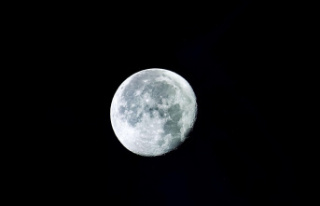Erosion, the gradual and natural wearing away of land, has been an ongoing process for millions of years. However, the modern world has exacerbated this force, causing it to threaten land, vegetation, wildlife habitats, and the natural environment at large. Understanding erosion is crucial to protecting the planet, and its impacts are felt around the world. This Comprehensive Guide to Understanding Erosion and Its Impacts on Our Planet article will delve into what erosion is, the different types of erosion, its causes and effects, as well as innovative solutions for preventing its disastrous impacts on our planet.
In this article, we will discuss the fundamental science behind erosion, including the processes that cause it and how climate change has impacted acceleration over time. We will also take a closer look at the destructive effects of erosion on the environment, including soil degradation, landslides, and the destruction of natural habitats. If you can understand the causes and effects of erosion meaning, you can better protect the planet against potential destruction.

What Is Erosion?
Erosion is the gradual process of soil and rock being worn away by natural forces such as water, wind, and ice. The severity and rate of erosion can vary depending on the strength and duration of the forces acting upon the surface. The impacted areas can range from a small plot of land to entire mountainsides, and the consequences may include soil depletion, landslides, and water pollution.
Furthermore, erosion is a natural phenomenon, but human activities like deforestation, construction, and intensive agriculture practices can significantly increase the rate of erosion. Understanding erosion mechanisms and their impacts on our planet is crucial to protect the environment and to preserve natural resources for future generations.
Types of Erosion
Erosion is a natural geological process that results in the gradual wearing away of rocks and soil due to the movement of water, wind, and ice. It is a fundamental geological process that impacts the Earth's surface, and it can shape our planet's landscapes over millions of years. There are two broad categories of erosion: geological erosion and accelerated erosion.
- In geological erosion, natural processes gradually wear away the Earth's surface, such as water slowly carving out a riverbed.
- Accelerated erosion, on the other hand, is the result of human activities that interrupt natural processes, such as deforestation, overgrazing, and construction activities. Understanding these two types of erosion and their impacts can help us make informed decisions about sustainable land-use practices and prevent further irreversible damage to our planet.
Causes of Erosion
Erosion is the natural process of soil and rock being gradually worn away by the wind, water, and other environmental factors. The causes of erosion are diverse and can vary depending on the location and conditions surrounding the area.
- The first cause of erosion is water, which is responsible for approximately 80% of all erosion worldwide. This can include heavy rainfall, flooding, wave action in coastal areas, and even the movement of small streams and tributaries.
- Secondly, wind erosion occurs in arid and semi-arid regions where there is little vegetation to protect the soil.
- Finally, human activity is also a significant cause of erosion, including deforestation, construction, agriculture, and mining.
These activities can lead to soil disturbance, lack of vegetation cover, and soil compaction, which all contribute to the acceleration of erosion rates. Understanding the causes of erosion is essential to prevent further damage and to promote sustainable land use practices that minimize this natural process's negative impacts on the environment.
Effects of Erosion on Our Planet
Erosion is one of the most destructive natural processes affecting our planet. It is the process by which soil, rock, and sediment are gradually worn away by wind or water, and it occurs naturally over time. The impact of erosion on our planet cannot be overemphasized, as it leads to a host of negative effects, including the following:
1. Loss of productive topsoil: Erosion can lead to the loss of nutrient-rich topsoil, which is essential for agricultural production and maintaining a healthy ecosystem.
2. Soil compaction: As soil erodes, it can become more compacted, which reduces its ability to absorb water, air, and nutrients. This can increase the amount of runoff and lead to water pollution.
3. Landslides: Erosion can also cause landslides in steep terrain that are both destructive and potentially deadly.
4. Water pollution: As soil erodes, it can carry sediment into waterways and pollute them, threatening aquatic life and disrupting freshwater supplies.
Strategies to Prevent and Manage Erosion
Erosion is a natural phenomenon that occurs in various environments, such as rivers, oceans, coastlines, and mountains. While some forms of erosion can be beneficial, such as the formation of valleys and canyons, excessive erosion can have detrimental effects, including damage to infrastructure and loss of land. To prevent and manage erosion, it's crucial to implement effective strategies. Here are five strategies to prevent and manage erosion:
1. Plant vegetation: Vegetation is a natural way to reduce erosion by binding soil together with its roots. It also helps by absorbing and slowing down water flow.
2. Mulching: Mulching involves covering exposed soil with organic material, such as leaves or straw, to protect it from direct exposure to raindrops, thereby reducing soil displacement.
3. Terracing: Terracing involves creating horizontal ridges on sloping land to reduce the speed of water runoff and encourage water infiltration, which helps prevent soil erosion.
4. Constructing retaining walls: Retaining walls provide significant support and stability to steep slopes and prevent surface runoff from causing erosion.
5. Proper drainage: Proper drainage is crucial to prevent water from accumulating in one area, which can lead to soil erosion. Implementing efficient drainage methods prevents water from accumulating and decreases
In Conclusion
Erosion is a largely misunderstood phenomenon that has far-reaching impacts on our planet. By understanding the causes and effects of erosion, we can take steps toward preventing and mitigating its negative impacts. By adopting sustainable land use practices, conserving natural habitats, and engaging in reforestation efforts, we can help to combat the devastating effects of erosion and preserve our planet for generations to come. It is up to each and every one of us to take action toward protecting our natural environment, and educating ourselves on the implications of erosion is an important step toward achieving this goal.
Date Of Update: 02 May 2023, 08:16











